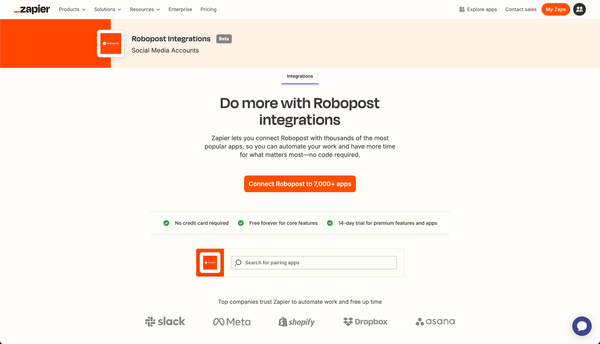Evolving with the Digital Age: Why Businesses Can't Ignore Social Media Tools
Discover how businesses thrive by using social media tools to build brand identity, engage customers, and maximize ROI in the digital era.

Social media plays a huge role. As we fully embrace the digital age, companies need to use social media tools to stay competitive and relevant. This article looks at different ways social media impacts business, including building a brand, managing customer relationships, and getting a good return on investment with targeted ads. We will discuss strategies that can help businesses not just survive, but succeed in the digital world.
Key Takeaways
- Social media is essential for modern businesses to raise brand awareness, connect with customers, and utilize content created by users.
- Managing social media effectively requires a thoughtful strategy, which includes posting regularly, making decisions based on data, and curating content that matches brand values.
- Social media advertising can greatly improve returns on investment by targeting the right audience, creating engaging content, and carefully analyzing performance.
- Combining social media with other marketing channels helps create a consistent brand experience and strengthens messages across different customer interactions.
- Businesses need to address challenges on social media, like handling negative comments and keeping up with frequent changes on platforms.
The Imperative of Social Media in Modern Business
Building Brand Awareness and Identity
Social media is important for creating brand awareness and identity. It allows businesses to express their unique voice and values, connect with their audience, and stand out from competitors.
- Stay consistent: Regularly sharing content that matches your brand's message helps reinforce your identity.
- Tell your story visually: Use images and videos to share your brand's story and values.
- Engage with your audience: Interacting with followers helps build a community around your brand.
Social media provides a unique chance to share and promote a brand's story to a global audience, making it an essential tool for any business that wants to succeed in today’s market.
Engaging with Customers in Real-Time
Platforms like Twitter, Facebook, and Instagram let businesses interact with customers instantly, answering questions and creating a sense of community. This quick engagement not only improves customer service but also helps build trust and loyalty.
Being able to talk with customers in real-time is a valuable asset for businesses. It allows for immediate feedback and gives the chance to address concerns or celebrate positive experiences right away. This quick response can greatly increase brand awareness and draw in new customers.
Strategies for Effective Social Media Management
Creating a Consistent Posting Schedule
Keeping a regular posting schedule is important for keeping your audience interested and making sure your social media presence is consistent and trustworthy. By planning your content ahead of time, you can avoid rushing at the last minute and take a more strategic approach to your posts.
- Use analytics to find out the best times to post for your audience.
- Create multiple pieces of content at once to save time and ensure quality.
- Use scheduling tools, like Robopost, to automate when your posts go live.
Being consistent doesn’t mean you have to post every day; it’s about finding a routine that works for your brand and sticking to it. Use tools that let you schedule posts in advance so they can publish even when you're not online.
Curating Content to Reflect Brand Values
Sharing content that matches your brand's values is important for building a real connection with your audience. This means choosing images, articles, and posts that fit your brand's beliefs and ensuring that each piece of content is useful to your target audience.
Here are some steps for curating content effectively:
- Define your brand's core values and mission.
- Analyze your audience to understand what they care about.
- Choose content that represents your brand and appeals to your audience.
- Don’t overwhelm your followers with too many posts; focus on quality instead of quantity.
The goal is to create a strong brand image that stands out in the busy social media landscape.
Maximizing ROI with Social Media Advertising
Targeting the Right Audience
It's really important to target the right audience. This means reaching out to people who are most likely to be interested in what you’re selling. Doing this well makes your campaigns more effective and gives you a better return on your investment.
To find your target audience, think about things like their age, interests, and online behavior. Social media platforms provide many targeting options to help you connect with the right customers. For example:
- Demographics: Age, gender, location, education, and job title
- Interests: Hobbies, favorite shows, and preferred brands
- Behaviors: Shopping habits, devices they use, and how they interact with content
Once you know who your audience is, create content that speaks to them. This personal touch helps build a connection, which can lead to more brand loyalty and sales.
Crafting Compelling Ad Content
Creating engaging ad content is crucial. The aim is to grab your audience's attention and deliver your message in a way that connects with them and encourages them to take action. This requires a mix of creativity and strategy to ensure that everything you create matches your brand's style and goals.
Here are some key elements to consider:
- Images or videos: Use one or more attractive, high-quality photos, GIFs, or videos that suit your brand and appeal to your audience.
- Copywriting: Write clear and persuasive text that highlights the benefits of what you’re offering.
- Call to Action (CTA): Include straightforward and compelling CTAs to guide users on what to do next, whether that's buying a product, signing up for a newsletter, or following your brand.
To create ad content that stands out in a busy social media space, you need to really understand your brand and your audience. It's not just about selling something; it's about sharing a story that your audience wants to be involved in.
Measuring and Analyzing Ad Performance
Being able to measure and analyze how well your ads perform is essential for improving your return on investment (ROI). Businesses need to dive into the data to see which ads connect with their audience and understand the reasons behind it. This means looking at different metrics, such as how many people click on the ads, how much engagement they get, and the conversion rates.
To effectively track and assess the success of social media campaigns, marketers can use tools that provides detailed reports on brand metrics across multiple profiles. By comparing different time periods and analyzing trends, businesses can make informed decisions to improve their advertising strategies.
Here's an example of how to organize data to evaluate ad performance:
Metric | Previous Period | Current Period | Change |
|---|---|---|---|
Click-Through Rate | 1.2% | 1.5% | +0.3% |
Engagement Rate | 3.4% | 4.1% | +0.7% |
Conversion Rate | 2.1% | 2.6% | +0.5% |
By regularly checking these metrics, companies can find out what works well in their ads and use those successful elements in future campaigns. They can also identify areas that need improvement.
Integrating Social Media with Other Marketing Channels
Creating a Cohesive Omnichannel Experience
By connecting social media with other marketing channels, businesses can make sure their brand message is consistent and connects with the audience, no matter which platform they're using. This not only strengthens the brand identity but also expands the reach of marketing campaigns.
To do this, consider these steps:
- Make sure your brand's voice and visuals are the same across all channels.
- Create campaigns that can be adapted and shared on different platforms.
- Use insights from social media to improve the customer experience on other marketing channels.
Building a consistent experience for customers at every touchpoint improves their overall experience and encourages brand loyalty. This strategic approach can lead to more customer engagement and ultimately boost profits.
Leveraging Cross-Promotion Opportunities
Cross-promotion is a strategy where businesses work together across different social media platforms to spread their message and reach more people. By sharing unique content that fits each platform's audience, companies can create a more engaging and varied social media presence.
- Share different content on each platform.
- Use link-sharing options.
This approach boosts visibility and encourages users to follow your brand on multiple channels, making your marketing efforts more effective. It's important to understand what makes each platform unique and tailor your messages to connect with the specific audiences on each one.
Ensuring Consistent Messaging Across Platforms
Consistency is like the grout that holds everything together. Businesses need to keep their messaging the same across all platforms to maintain their brand image and avoid confusing their audience. This takes careful planning in how content is created and shared.
- Create a brand style guide that covers voice, tone, and visual elements.
- Make sure messaging aligns with the company's core values and mission.
- Regularly check social media channels to ensure they follow the brand's standards.
When done right, a consistent brand message can connect more strongly with the audience, building trust and loyalty. This requires teamwork between marketing, customer service, and any other departments that handle external communication.
Navigating the Challenges of Social Media
Handling Negative Feedback Constructively
Negative feedback on social media can be a chance to learn and improve, as long as it’s handled carefully. It’s important to respond quickly and with empathy, showing you care about the customer's issue and are committed to fixing it.
- Listen to the customer’s complaint
- Respond quickly and politely
- Offer a solution or ask how you can help
- Follow up to make sure the issue is fully resolved
Handling negative feedback this way not only solves problems but also boosts your brand’s reputation for great customer service. Treat every complaint as an opportunity to get better and keep the focus on your customers.
Staying Updated with Platform Changes and Trends
Social media platforms are always updating with new features and algorithms. To stay competitive, businesses need to adjust fast.
Here’s how companies can stay ahead:
- Keep up with social media news and updates.
- Join industry webinars and workshops.
- Connect with other social media professionals.
- Test new features on a small scale before using them fully.
Adapting to changes isn’t just about keeping up—it’s about using these updates to improve your social media presence and engage better with your audience.
Conclusion
Social media is essential for businesses that want to succeed. These platforms give businesses great chances to boost their brand, connect with customers, and analyze market trends. Ignoring social media means falling behind competitors and losing touch with customer needs. By using social media tools, businesses can create a strong online presence, build better relationships with their audience, and stay ahead in a constantly changing market. To thrive in the digital age, businesses need to be flexible, and social media is where they can show their ability to adapt and grow.
